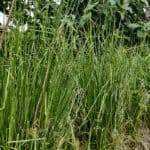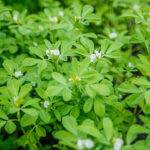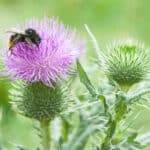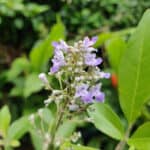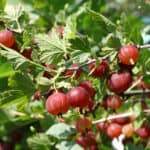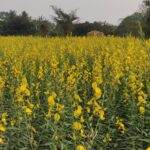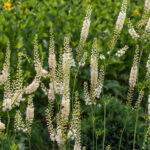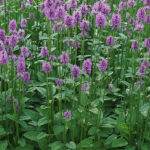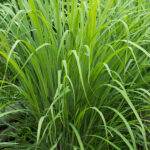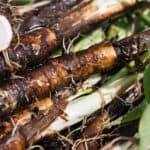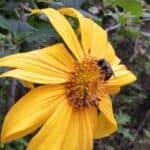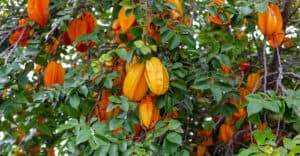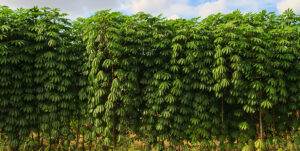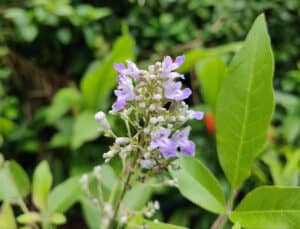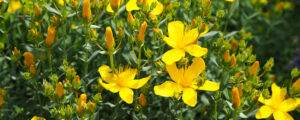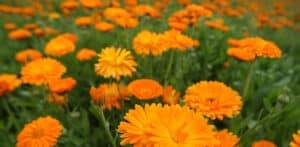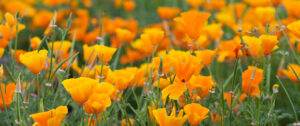
Moth Beans – Legumes of the Dry Lands
One of the sweetest beans I ever tasted, Moth Beans have existed very subtly in our diets and farming practices for generations.
The beans are native to India, Pakistan, and Myanmar and have been cultivated across the semi-arid and arid regions of Asia and adjoining regions.
The scientific name is Vigna aconitifolia and it belongs to the legume family (Fabaceae) Some of its common names are Dew beans, mat beans, Turkish grams, Mot in Hindi, Matki in Marathi Payaru in Tamil, Kunkumapesalu in Telugu, Vanmug in Bengali, and Madaki in Kannada.
Moth Beans are an integral part of small-scale farmers from different climate zones of India as it is known for being drought-resistant, rich in proteins and other nutritional values and can tolerate a variety of soil types, even salinity up to some extent.
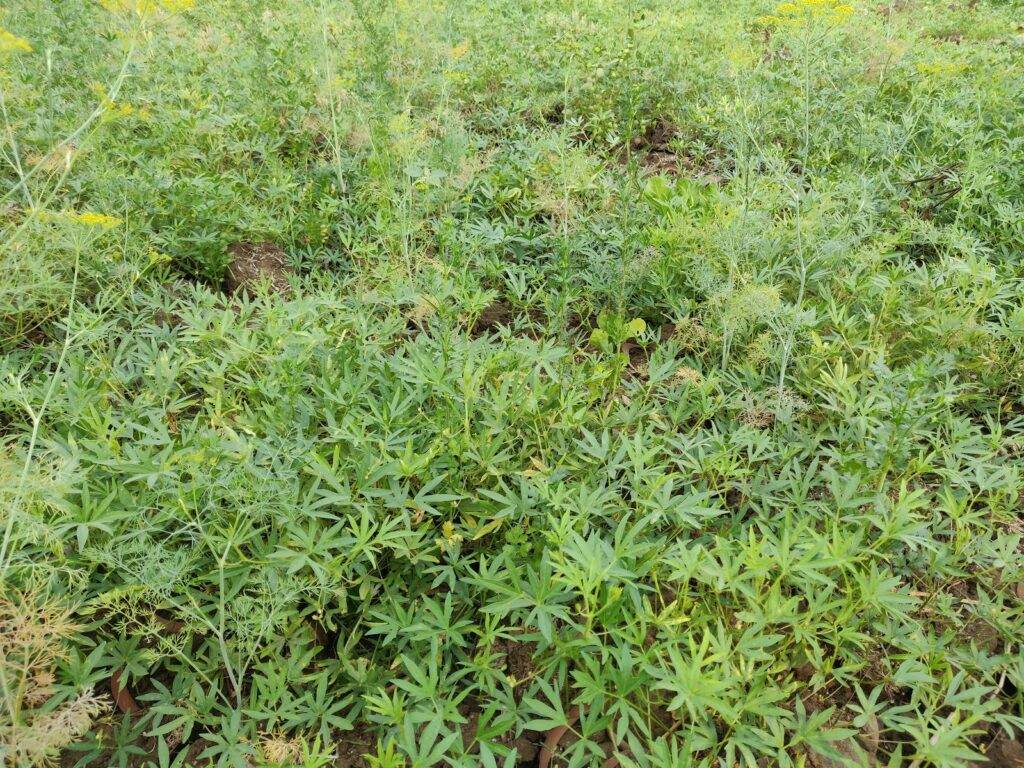
It is an annual herbaceous legume grown across altitudes up to 1300 m above sea level. It has a prostrate creeping habit and can grow up to a foot tall and spread across a 2 to 5 ft wide radius. When randomly scattered, it spreads enough to cover the ground without leaving any space in between.

The leaves are trifoliolate, alternatively arranged, and lobed ranging from 5 to 10cm in length. The flowers are bisexual and yellow in colour. The seed pods are elongated, around 2 to 3 cm long and each pod holds around 5 to 8 beans. Initially green, they turn dark brown at maturity.
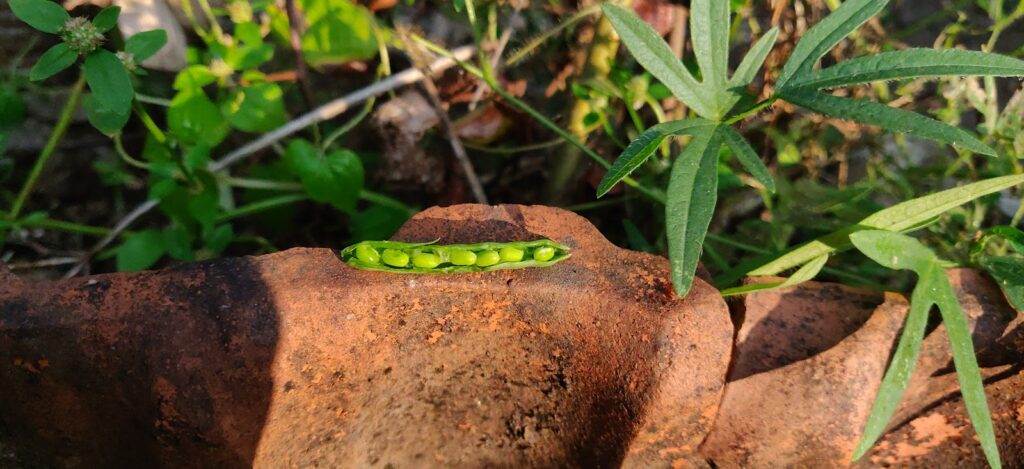
The beans (seeds) are tiny, ranging from 3 to 4 mm and are often mottled with colours ranging from yellow to brown, whitish-green, and black with spots of brown or white as they mature and dry. The sizes differ based on varieties and growing conditions.
Plant Properties & Traditional Importance
Moth beans are traditionally grown as a single crop, for fodder, biomass and intercropped with other crops as well.
Being a nitrogen-fixing legume, moth beans are traditionally used in crop rotation to fix atmospheric nitrogen into soils. Crops like millet, cotton, coriander, fennel, corn, flax seeds and more are intercropped as they benefit from moisture and nitrogen-fixing.
They have a well-developed taproot system that goes deep in diverse soil types and the thick growth above retains soil moisture by covering it making it possible for the legume to grow in diverse soil types.
They are chosen to help prevent soil erosion by retaining soil moisture, preventing the top soil from drying up and getting eroded with hot summer winds.
Along the paddy fields of Western Ghats of India, moth beans are grown post-rice harvest to retain the soil moisture for upcoming dry seasons thus reducing dependence on irrigation and utilizing the existing climatic conditions to obtain a yield. That’s Permaculture principles in practice since ages!
An Observation: Our soil type is clay with a wet and dry climate zone, the summers are harsh and the clay turns into literal dry-rock-like slabs. Moth beans are among the very few plants that manage to survive these conditions until the end of summer without irrigation. They cover our fields and retain enough moisture to help the intercropped coriander, fennel and corn sustain.
Growth And Caring
Moth beans don’t really need any special care as long the soils are not waterlogged. They smartly utilise whatever moisture and sun are available to grow and spread.
Propagation
They are easily propagated through seeds. Traditionally the farmers plough the land, either with a bull-pulled plough or by humans. Then the seeds are randomly dispersed around the farm. They are mixed with other beans and vegetable seeds.
If you wish to line-plant moth beans, you can sow the seeds at 3 to 4 ft intervals, 2 seeds each, sown an inch deep, enough to stay moist and not exposed directly to the sun. Post germination, pull the comparatively weaker plant out and let the stronger one grow.
It takes a week for germination in ideal temperatures ranging in between 24 to 27°C and within 15 days the tiny growth can be seen taking over as ground cover slowly.
We sow them a month post-rice harvest (November end or December) there’s enough moisture in the soil from the wet season to help the seeds germinate but not too much as such that they rot.
Site Selection
It is a 4 to 5 months crop and thrives in full sun and in diverse soil types. Thus, it is best suited for pasture lands and paddy fields. It can tolerate annual rainfall as low as 200 – 250 mm. It thrives in the temperature range of 24 to 32°C and can tolerate up to 45 °C as well.
It also comes under dew-fed crops and doesn’t need any external irrigation as it utilizes whatever moisture that is available from both soil and dew to grow.
You can opt for sprinkle irrigation 2 to 3 times in the initial two months for better yield.
Additionally, the site needs to be fenced for the legume being highly palatable to cattle, it attracts them.
Managing Pest
Whitefly is a common occurrence, even though we have still not experienced a drastic drop in yield over the past 10 years despite climate change due to whiteflies. If it seems like a major threat, just spray and neem seed kernel extract.
Spotted pod borer is another common occurrence, again with no major issues of yield so far as the birds take care of the borers at the caterpillar stage and neem products usually give good control as well when sprayed regularly at an early stage.
Again, a bit of flies and borers eating tiny amounts of beans is nothing to worry about as long as the plants are healthy. Do not rush to spray pesticides as it can disturb the healthy soils that are building simultaneously under and around the beans 🙂
Harvesting & Storage
Moth beans are harvested when the seed pods mature and start turning brown and dry. Mostly at the end of 3rd or 4th month depending on the variety. The ideal time is when more than 70% of the seed pods have turned dry but not all as they start to scatter once the entire plant turns dry.
The remaining few green pods are separated while harvesting and eaten as snacks, roasted or boiled. They are a seasonal delicacy here!
The branches or entire plant is cut with sickle and sun-dried for a day or two.
Local Harvesting Tip: We harvest the branches early morning, this helps avoid shattering as the lower night temperatures soften the pods a bit as compared to harvesting during or post noon.

Once harvested, the branches are collected on a cloth and laid down to dry on a tarpaulin in the afternoon sun, it helps make the pods crisp! By evening they are thrashed with sticks to break the pods open.
Then the heavy chaff are separated manually. The remaining thrashed mix of leaves, seeds and tiny sticks is winnowed to separate the heavy and lighter particles. All chaff is saved for fodder.


The mature seeds settle as heavy particles which are then collected, thrashed again if required to break the remaining pods, winnowed and sieved to separate chaff, stones, soil or smaller immature beans if any to avoid spoilage during storage. The entire process is repeated until all of the beans are harvested.
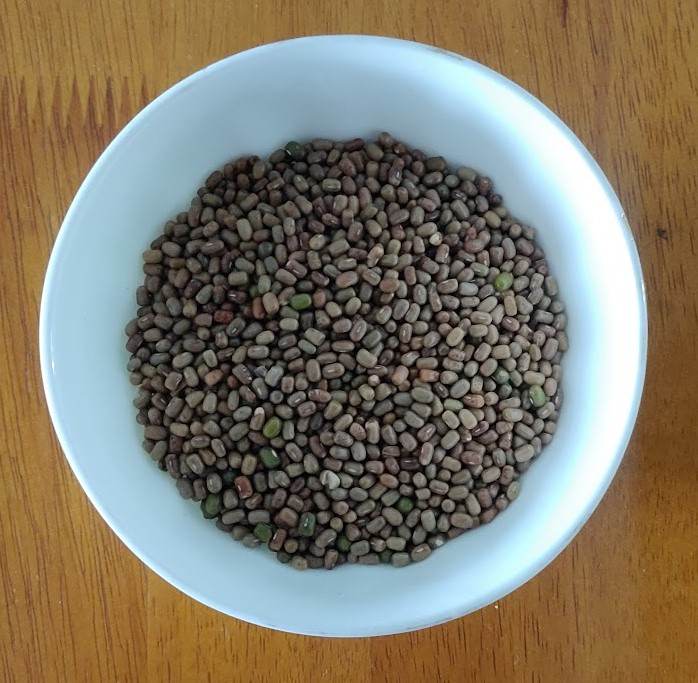
The final seeds are sun-dried for the upcoming 2 – 3 days and then stored in air-tight containers.
Storage Tips: For better shelf life and to prevent pest or fungal infestation, different traditional treatments are used:
- Make a solution of sea salt and water, dip the beans in the solution, remove immediately and lay in the sun to dry.
- Rubbing tiny amounts of castor oil with hands to the beans and sun-drying them for 2 – 3 days.
- Adding neem or tejpata (bay leaf) leaves during storage to repel pests.
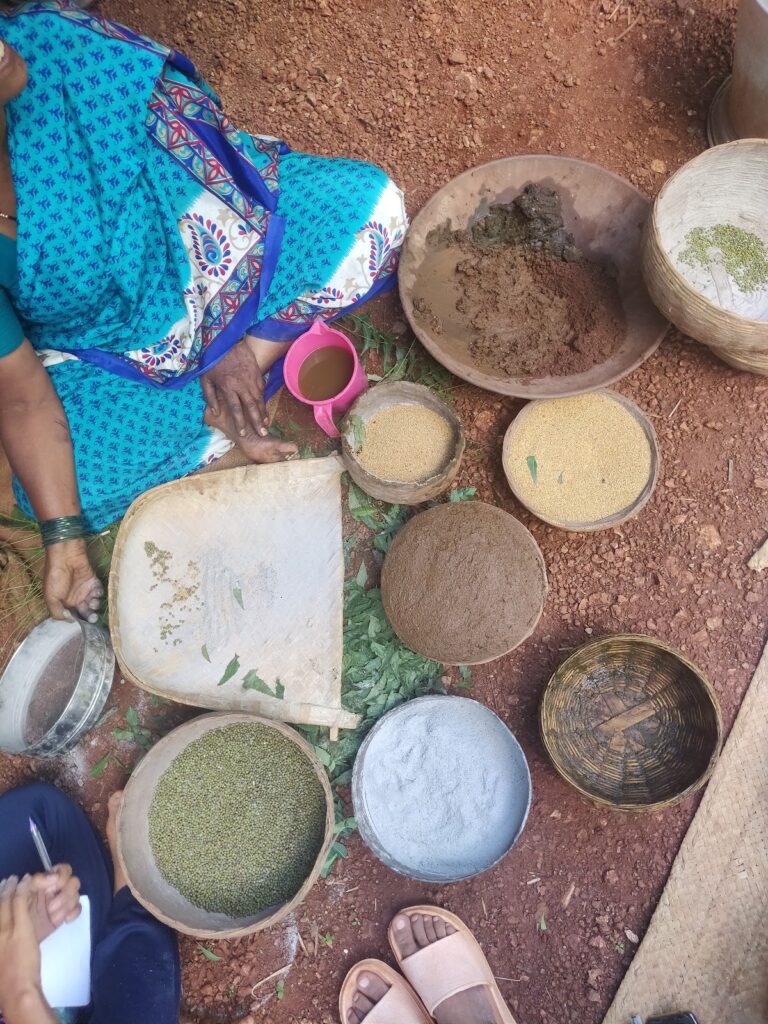
The best beans are stored separately for seeds. Traditionally they are stored with neem leaves and ash and sealed airtight in cow dung and soil-based plastered baskets.
Regenerative Applications of Moth Beans
Companions For Your Guilds
Moth beans are excellent annual nitrogen-fixing companions if you are trying to create new guilds or add a ground cover to existing guilds.

My experience so far has been that they not only crawl on the ground as ground cover but also climb up at times on thorny bushes adding more foliage to the ground and just above-ground layers of the food forest. The green foliage is a great chop and drop and the dry foliage acts as great mulch as well.
Neglected & Degraded Patches of Soils?
Moth beans are known for growing in soils with lower organic matter and soils which have inherently poor physical properties. In fact, on our farm, where we have clumping clay with high compaction due to heavy rain and absolutely low soil conditioning, they still thrive in fully sunny patches!
So do consider growing them to prevent erosion of degraded soils and improve soil quality along with getting a yield!
Source of Protein for All
Being rich in protein (seeds being 20 – 24% protein), moth beans are considered significant to meet the nutritional needs of both humans and domesticated animals.
The sprouts are gaining popularity as an immunity booster and for regulating bowel movement diet due to the proteins, vitamin B1, zinc, phosphorus, magnesium, digestive fibers and more.
The leaves are highly palatable for livestock and nutritious as well. Even the dry remains of hay are also high in nutrition and are stacked up as fodder.
An observation: When the deciduous summers meet us, most of the leguminous plants lose their leaves or dry out, moth beans being the surviving greens, they stand as nitrogen-rich green food for our chickens, they love pecking on the leaves, tender beans and green leaves.
Traditional Edible Uses From Across India
Moth Beans are a staple in India, they are sweet in taste and easy to digest and thus are preferred in a variety of dishes and consumed in different forms, from being eaten as raw sprouts to made into dals(split beans), flour and local savoury dishes.

Moth bean sabzi
This is prepared by using onion, potatoes, tomatoes, ginger, garlic and spices like chili powder, black pepper, coriander seeds, curry leaves, dry mango powder, turmeric, cumin, mustard and more. A tadka is given by adding different spices and condiments to a spoonful of oil and then all ingredients steamed together to make into a dry sabzi or sometimes a watery gravy.
Moth Beans Misal
This is a popular dish from the Maharashtra state of India. It is prepared with sprouted moth beans. There’s a thick curry of moth beans, called usal, and a spicy watery gravy called rassa which are prepared separately and mixed as per individual spice preferences while eating. A locally made bread called pav is served along with it. The dish is topped with finely chopped onions and tomatoes, coriander and farsan, a form of salty snack. A slice of lemon is squeezed on top before eating to balance the spicyness.
Moth Bean Bhel
This is made by mixing sprouted moth beans, sometimes raw or slightly cooked with savory items like tamarind, dates and jaggery chutney, coriander, chili and ginger chutney, some finely chopped onion, tomatoes and sometimes raw mango and farsan. All of it is topped with squeezed lemon juice and a pinch of pink salt, more like a salad but more tangy and spicy. The proportions of sweet, sour, spice and salt differ from place to place and sometimes puffed rice is added as well.
The flour is mixed with other grain flour to make flatbreads and in sweet prep like porridge.
Cooking Prep Tip: Moth Beans are hard to cook when in dried form, and thus it is recommended to sprout them or soak them in water overnight for at least 6 hours before cooking.
Closing Thoughts
From versatile applications to the ability to grow in diverse and harsh conditions, moth beans have been supporting the lives of small-scale farming communities and recently, distressed lands.
Thus they are an excellent resilient alternative to observe and integrate for regenerating lands, meeting nutritional needs and generating income for communities struggling with desertification and degradation of agricultural lands.




